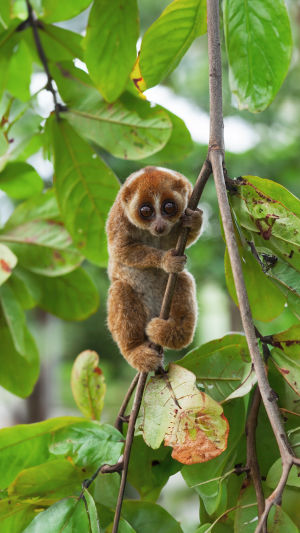<b>Lykkkers</b>, ready to meet nature's stealthiest toxins? Beyond fangs and stings, unexpected creatures—from tree‑dwelling primates to humble mollusks—wield potent poisons.
Their secret weapons shape ecosystems, defend territories, and even inspire medical breakthroughs. Prepare for a wild journey into the overlooked world of venomous marvels.
<h3>Surprising Primates</h3>
High in Southeast Asian rainforests, the endearing <b>slow loris</b> conceals a hidden danger. Beneath its furry arms lie <b>brachial glands</b> that secrete a toxin mixed with saliva when licked. In self‑defense, the loris lifts its arms in a seemingly playful gesture—actually a warning display.
A single bite can trigger swelling, intense pain, and in rare cases, <b>anaphylaxis</b> in humans. Illegal pet trade exacerbates risks: tooth‑clipping to “disable” bites causes severe infections, and mortality rates for trafficked lorises exceed 90 percent.
<h3>Unique Mammal</h3>
On eastern Australian rivers, the duck‑billed <b>platypus</b> surprises with both venom and egg‑laying. Each male sports a sharp <b>calcaneal spur</b> on its hind limb, connected to a gland that produces a complex venom of defensins and peptides.
During the late <b>mating season</b>, rival males spar fiercely, inflicting wounds that swell to golf‑ball size and resist standard analgesics. Human encounters result in excruciating pain lasting days, highlighting the unusual potency of monotreme venom.
<h3>Itchy Intruders</h3>
Few recall that the common <b>mosquito</b> is a venomous vector. Female mosquitoes inject <b>salivary proteins</b>—including anticoagulants, vasodilators, and immunomodulators—through a delicate <b>proboscis</b>. This biochemical prevents blood clotting and triggers the immune response that causes itchy red welts.
Beyond irritation, these tiny syringes transmit malaria parasites, dengue virus, and West Nile virus, underscoring how mosquito "venom" impacts millions of human lives annually.
<h3>Small but Mighty</h3>
Scurrying in woodlands and gardens, the unassuming <b>shrew</b> wields venom delivered via grooved incisors. Species like the <b>American short‑tailed shrew</b> produce toxins that paralyze insects, earthworms, and tiny vertebrates. After a lethal strike, immobilized prey remains fresh—stored in underground burrows for later feasting.
This reserve strategy sustains shrews through harsh winters when foraging proves perilous, demonstrating venom's role in survival beyond immediate kills.
<h3>Case of the Cones</h3>
Beneath tropical coral reefs, the elegant <b>cone snail</b> lurks among rocks and sand. Equipped with a harpoon‑like radula tooth loaded with <b>conotoxins</b>, it delivers venom that blocks nerve channels, inducing rapid paralysis. Some species can immobilize fish in seconds.
For humans who handle live cones, stings can cause muscle paralysis, respiratory failure, and—even in rare cases—death. Paradoxically, researchers harness conotoxins to develop novel painkillers that target specific neuronal pathways, illustrating venom’s dual nature as both threat and therapy.
<h3>Hidden Complexity</h3>
These five examples barely scratch the surface of nature’s venomous arsenal. From primate defence to molluscan predation, venoms comprise diverse <b>peptides</b>, <b>enzymes</b>, and <b>neurotoxins</b> fine‑tuned by millions of years of evolution.
Each toxin operates with surgical precision—disrupting blood coagulation, blocking ion channels, or triggering allergic cascades. Scientists decode these molecular to advance pharmaceuticals, while conservationists strive to protect venomous species threatened by habitat loss and exploitation.
<h3>Broader Impact</h3>
Understanding venomous animals reshapes human–wildlife interactions. In rural Borneo, awareness programs teach villagers to respect slow lorises rather than exploit them. In Australia, research on platypus venom leads to insights into autoimmune conditions.
Vector control efforts aim to neutralize mosquito saliva components that exacerbate disease severity. Even backyard gardeners benefit from learning to distinguish harmless shrews from stinging insects, reducing unnecessary eradication of beneficial species.
<h3>Conclusion</h3>
Nature's secret stars prove that danger often hides in plain sight. These venomous oddities remind <b>readers</b> that evolution's creativity knows no bounds—and that respect for every species, no matter how small or cuddly, is essential.
Embrace curiosity, tread lightly in the wild, and remember: the most unassuming creatures can pack the deadliest punch—and the most inspiring cure.





